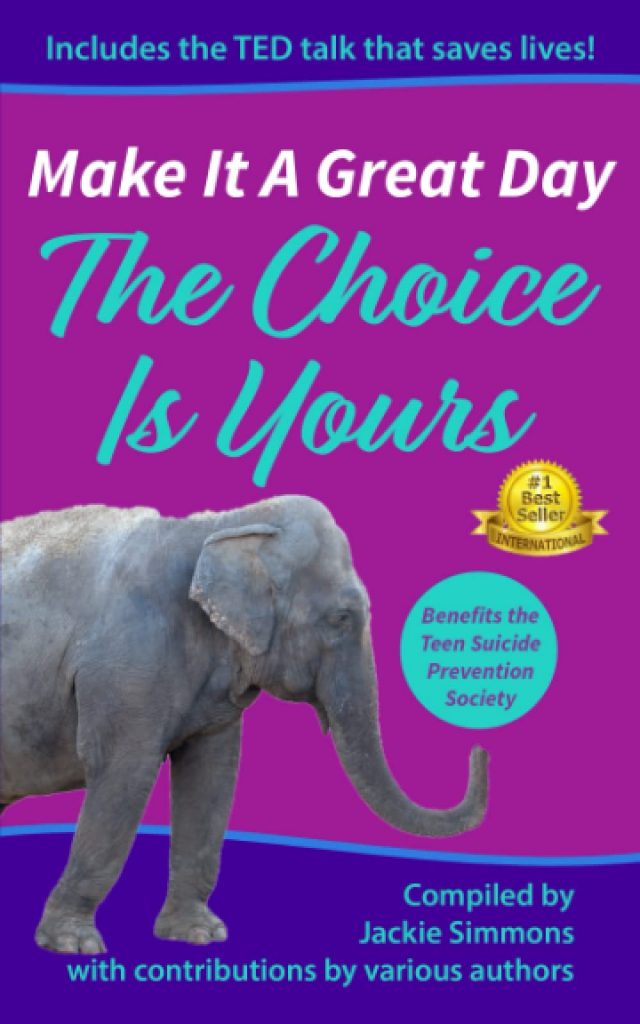It was a trip to the mall to buy clothes which set Jackie Simmons’s daughter off the first time. The teenager was in between sizes and couldn’t find anything that fit. Coming home from the shopping trip left Jackie’s daughter feeling that along with clothes not fitting, she didn’t fit anywhere.
The young girl stormed to the bathroom. A few minutes later she came to her mother Jackie, asking for help. Her left arm was bleeding due to an obvious self-inflicted injury. It was not life-threatening, and Jackie was able to stay calm. After a visit to a mental health facility the next day, Jackie and her daughter didn’t talk about it again.
“Who was to blame? It had to be somebodies’ fault.”
Jackie Simmons
Since Jackie’s daughter was getting professional help, Jackie feared if she mentioned suicide in a conversation that she might put the thought back in her daughter’s head.
Her daughter made 13 more attempts at suicide.
“By the way, it’s not possible to put a thought in someone’s head.”
Jackie Simmons
Jackie Simmons created The Teen Suicide Prevention Society to provide stigma-free, pure-prevention programs, books, and products designed to help you easily start “suicide proofing” your friends, family, team, and yourself.
It started with a simple idea: What if, instead of teaching people what signs to look for and ways to intervene, they are given ways to start talking about suicide in a way that didn’t assume someone was “at risk?”

Jackie’s book Make it a Great Day The Choice is Yours contains stories of heartache and stories of triumph from over twenty contributors. Each story is designed to help you break the silence. The stories are real, raw, and sometimes comes with dog turds.
Proceeds from her book go to The Teen Suicide Prevention Society and sponsors projects like a community center in the Mukuru slums in Nairobi, Kenya. They’ve built a small building used as a library for breakfast before school and a meeting place for kids after school. The Society also sponsors a night shelter for the safety of youth.

“Teen suicide is rising quickly world-wide. In 2020 more deaths in Sweden were from suicide than Covid-19, although it’s being driven by the consequences of COVID-19.”
Jackie Simmons
Jackie’s focus is on providing emotional resilience tools for kids and teaching them to kids.
“Resilience is caught not taught, and many parents aren’t able to share tools of resilience because they lack the trait as well. Children learn what they live.”
Jackie Simmons
Jackie is now a TEDx speaker. You can listen to her talk right here. Have “The Talk” to Stop Teen Suicide
“Silence is deadly when it comes to suicide.”
Jackie Simmons
Jackie claims a suicidal thought is perfectly normal. If having the thought causes fear, then an emotional layer is added to the thought. We try not to think about suicide, but often not thinking about it causes the thinker to think about it even more. This cycle becomes a negative echo chamber.
“The conscious mind is not in control. The subconscious is designed to manifest what we’re thinking about, and our brain looks for opportunities to bring about what we’re thinking about. Unfortunately, far too many people take the opportunity presented.”
Jackie Simmons
Kids call it self-deleting because it’s as easy as hitting the delete key.
Research has discovered that many people take their lives because it seems like the best idea at the time. Jackie’s mission is not to take suicide off the table, but to replace the ruminating thoughts with different ones.
Here’s a script for “the talk” that will change suicidal thought patterns in an easy, comfortable way.
Parent to child: “I’ve decided to be part of the movement to make teen suicide a thing of the past. They gave me a guide and I need to practice. Would you be willing to help me practice my talk for tomorrow?”
(When teens are given an opportunity to help they get a dopamine hit and the parent has started building a buffer between them and the ledge.)
Child: “Yes.”
Parent to child: “Thanks for helping me. It’s only four questions. Here’s the first one. Have you heard about the rise in teen suicides?”
Child: “Yes.”
Parent to child: “Thank you. Question 2 – Do you have a friend who has tried or died?”
Child: “Yes.”
Parent to child: “Thank you. Question 3 – Have you ever thought about leaving that way?”
Child: “Yes.”
Parent to child: “Thank you. Question 4 – What are your reasons for staying?”
(The good news is that when the teen lists reasons for staying they will begin to smile and change their attitude. Keep them talking about reasons for staying. You’ve just redirected their brain and created a new neuro network.)

“A child who confesses to thinking about leaving by suicide but cannot list reasons to stay needs to be helped immediately. Stay with them and call 911. This is the moment when you need professional intervention. They will hate you for it, and you might save their life.”
Jackie Simmons
Jackie reports the percentage of people who have had thoughts of leaving and no reasons to stay is ZERO.
“People who are struggling with depression and suicide are good at masking and lying. Even if they lie about reasons to stay, the brain believes them. It’s Ninja mindset magic!”
Jackie Simmons

Jackie cautions parents to follow the guide verbatim. Use this precise language. If parents’ probe for more information, they’ve just broken trust.
“We are about saving lives, not making parents feel good.”
Jackie Simmons
The Teen Suicide Prevention Society makes it as easy as possible to help your kids catch emotional intelligence. You can join the society and support their programs.




Quick Links to our Social Media Sites